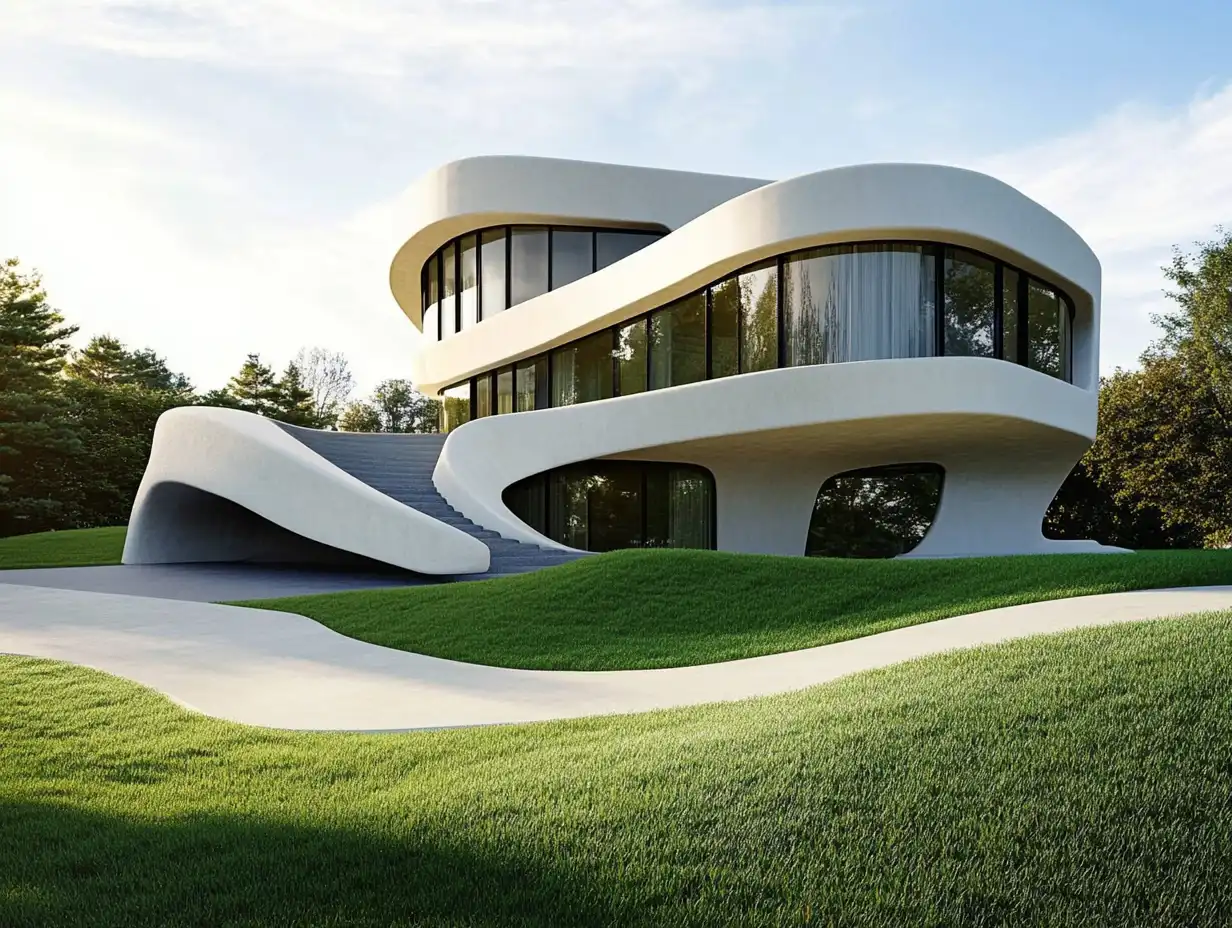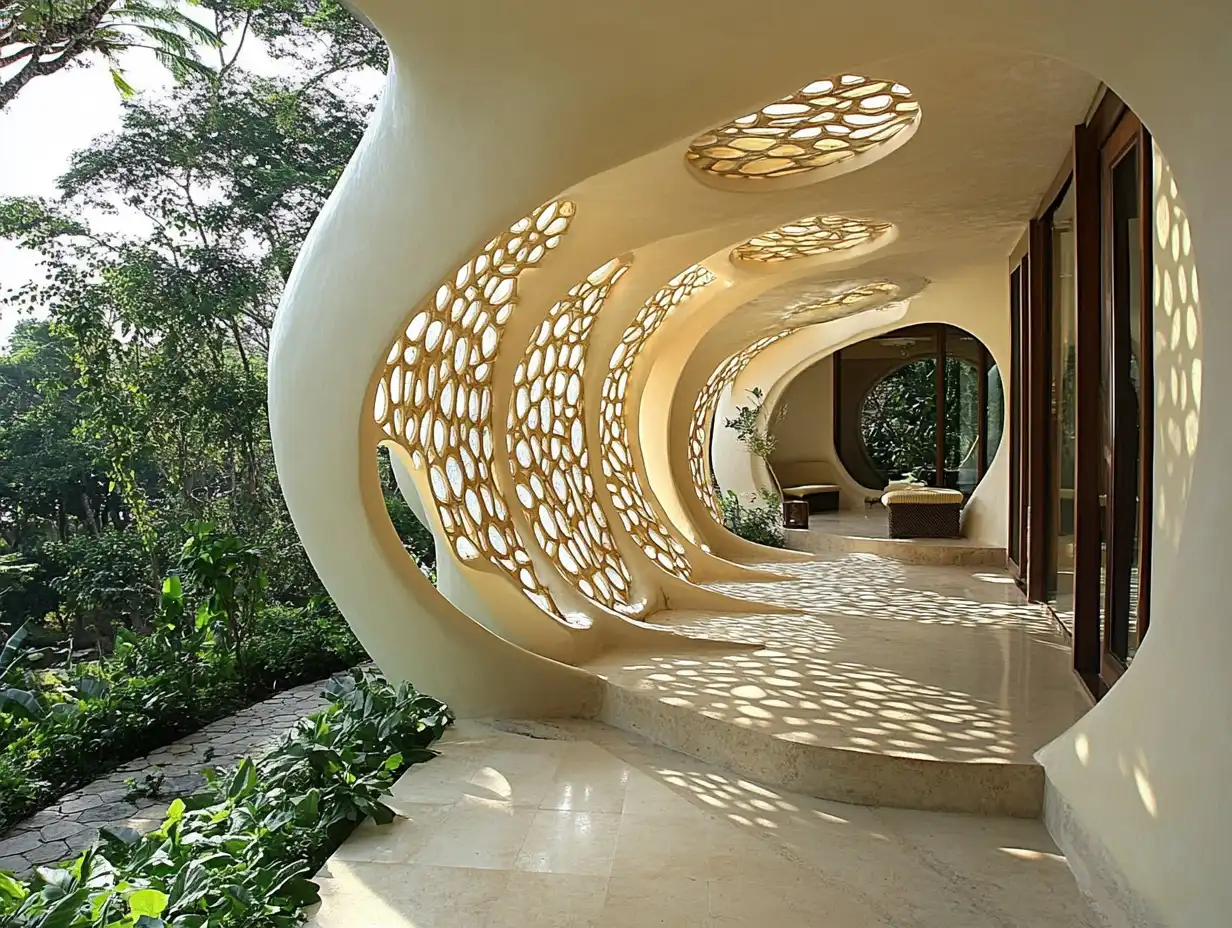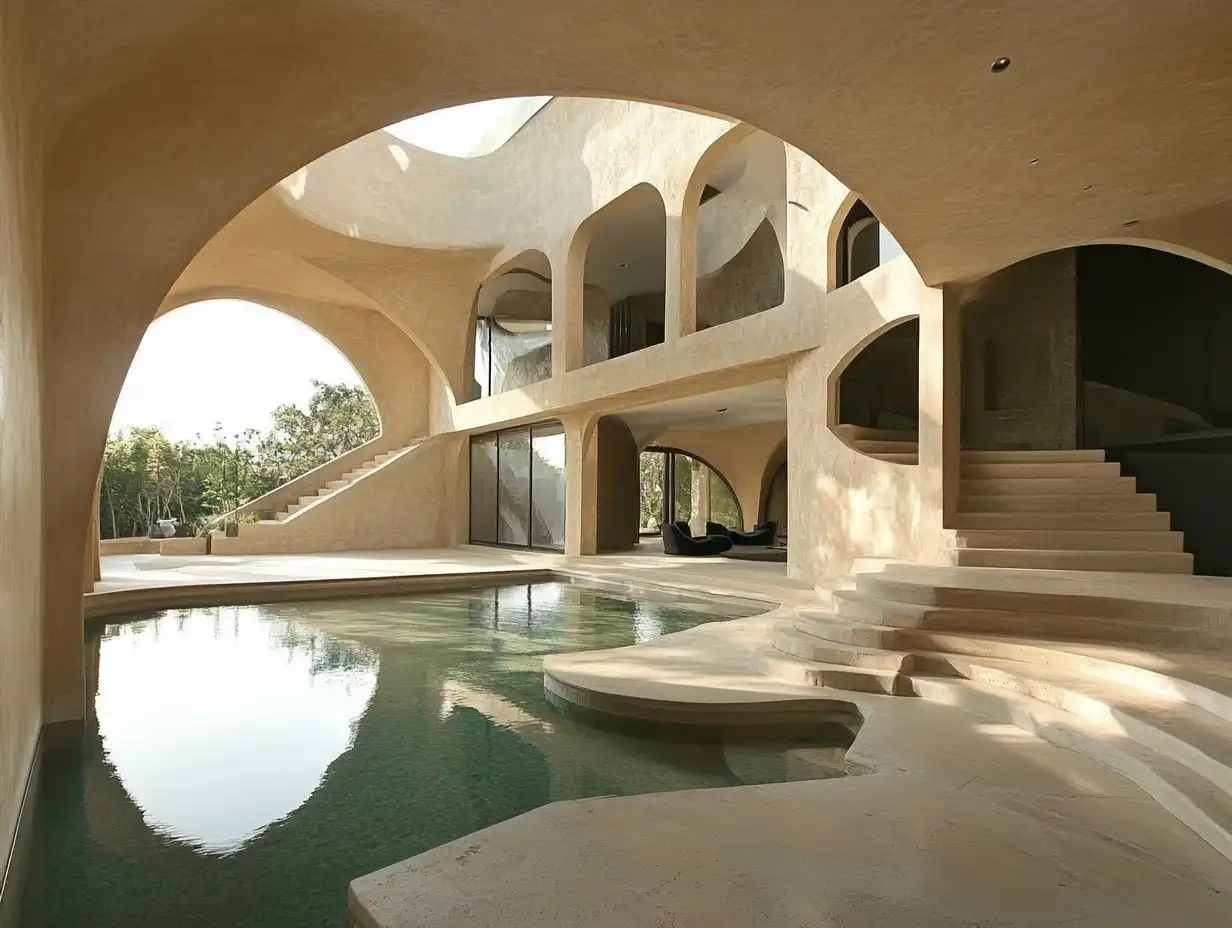Shapes play a powerful role in architecture, influencing not just the aesthetics of a structure but also its functionality and emotional impact. From the clean lines of rectangles to the fluid curves of organic forms, every shape tells a story and serves a purpose. They guide how we experience spaces, how light interacts with surfaces, and even how we feel within a building.
As we explore architecture, we see how shapes are more than just design elements—they’re tools that connect art, science, and human emotion. Whether it’s the timeless symmetry of classical buildings or the bold, unconventional forms of modern designs, shapes shape our world in ways we often overlook. Let’s dive into how these forms define the spaces we live, work, and dream in.

The Role Of Shapes In Architecture
Shapes influence both the structural integrity and aesthetic value of architecture. Geometric shapes like rectangles and triangles provide stability. For example, triangles distribute weight evenly, making them essential in bridges and trusses. Conversely, organic shapes like curves or irregular forms create visual fluidity, often used in cultural centers or museums.
Shapes also guide how we experience space. Circular layouts encourage movement and interaction, frequently seen in amphitheaters or plazas. Rectilinear structures create order and functionality, found in offices or residential complexes. Rounded and soft shapes evoke comfort, while sharp or angular designs convey power and precision.
Materials interact with shapes to define appearance and durability. Steel enables dramatic curves in skyscrapers, while concrete allows large, uninterrupted geometric surfaces in brutalist designs. Glass enhances transparency, emphasizing clean lines in modernist architecture.
Cultural and regional influences shape architectural design. In Islamic architecture, repeated geometric patterns symbolize infinity and unity. Meanwhile, in traditional Japanese tea houses, natural forms integrate buildings with their surroundings.
Architects use shapes to evoke emotion and convey purpose. Soaring vertical forms inspire awe in skyscrapers, whereas low, horizontal lines promote serenity in pavilions. Shapes transform buildings into meaningful spaces that connect art, functionality, and human experience.

Historical Use Of Shapes In Architectural Design
Shapes have played an integral role in architectural history, reflecting cultural, religious, and functional values. From geometric patterns to organic forms, historical structures reveal how shapes shaped civilizations.
Geometric Patterns In Ancient Structures
Geometric shapes defined ancient structures, providing symmetry and order that symbolized stability and continuity. Egyptian pyramids, constructed using triangular forms, represented permanence and connection to the divine. Greek architecture relied on rectangular shapes in the Doric and Ionic columns, emphasizing proportion and harmony. In Islamic architecture, intricate geometric patterns adorned mosques and palaces, symbolizing spirituality and infinity. These shapes served both practical and aesthetic purposes, ensuring stability while enriching visual appeal.
Organic Forms In Historical Architecture
Organic shapes in historical architecture mimicked natural elements, blending structures with their surroundings. Gothic cathedrals used curved arches and flowing lines to create a sense of upward movement, directing focus toward the heavens. Indian temple architecture incorporated rounded domes and sculpted forms, representing cosmic harmony and divine energy. In Mesoamerican design, stepped pyramids combined sharp angles with softer forms inspired by the landscape. These forms often communicated cultural beliefs, enhancing the emotional connection between architecture and its users.
Modern Interpretations Of Shapes In Architecture
Architectural design has embraced modern shapes to balance form, function, and innovation. Evolving technologies and design philosophies have redefined how we approach minimalism and parametric architecture.

Minimalism And Clean Lines
Minimalism in architecture emphasizes simplicity through geometric shapes and clean lines. Rectangles, squares, and flat planes dominate minimalist structures, showcasing functionality over ornamentation. Architects use these shapes to create spaces that feel open and uncluttered, enhancing focus on spatial proportions and natural light.
Glass, steel, and concrete feature prominently in minimalist designs, offering sleek, unembellished finishes. Landmarks like the Farnsworth House by Mies van der Rohe illustrate this ethos, with its rectilinear structure seamlessly blending with the environment. By reducing visual complexity, minimalism fosters serenity and clarity in modern spaces.
The Rise Of Parametric Design
Parametric design embodies innovation through complex geometric shapes and computational modeling. Architects employ algorithms to manipulate shapes—such as twisting towers or undulating facades—based on functional and aesthetic parameters. This approach enables efficient use of materials, adaptive structures, and intricate detailing.
Take the Heydar Aliyev Center by Zaha Hadid as an example, where organic shapes create seamless transitions between the building and its surroundings. Parametric designs often incorporate curved surfaces and asymmetrical forms, diverging from traditional symmetry to convey fluidity and dynamism. These shapes not only break conventional boundaries but also respond to sustainability and environmental considerations.
Symbolism And Cultural Significance Of Shapes
Shapes in architecture carry deep symbolism, transcending aesthetics to reflect the cultural, religious, and historical contexts from which they emerge. Their forms often serve as physical manifestations of shared beliefs and values.

Religious And Spiritual Connotations
Architectural shapes often embody religious and spiritual meaning, shaping sacred spaces to convey deeper connections. Circles, seen in domes and rotundas, symbolize eternity and perfection in various traditions, such as the Islamic use of circular domes in mosques to represent the heavens. Triangles, associated with balance and unity, feature prominently in Christian architecture, where Gothic spires point towards the divine. In Buddhist stupas, curvilinear forms symbolize enlightenment and harmony. These shapes create an emotional and spiritual resonance.
Influence Of Local Traditions
Shapes in architecture also draw heavily from local traditions, reflecting cultural identities. In East Asian pagodas, curved roofs derived from bamboo construction emphasize adaptability to natural forces like earthquakes and wind. African vernacular architecture incorporates rounded forms, such as circular huts, enhancing communal living and climatic adaptability. Indigenous Australian shelters often use organic shapes inspired by natural environments, harmonizing human activity with the landscape. Local materials and customs further influence these shapes, grounding structures in their cultural and ecological context.
The Fusion Of Functionality And Aesthetics
Shapes inherently intertwine practicality with visual appeal in architecture, bridging structural needs and design creativity. They drive innovation while enriching how we interact with spaces.

Structural Innovations Through Shape
Shapes optimize stability and efficiency, enabling groundbreaking structural designs. Engineers use triangular frameworks for bridges, where their rigid geometry distributes weight evenly. Rectangular and vertical forms dominate skyscrapers due to their ability to maximize space while addressing gravitational and wind forces. For example, hexagonal grids balance strength and material use, as seen in the façade of The Hive in Singapore.
Advancements in parametric design integrate organic shapes that mimic natural structures. Curvilinear forms, like the wave-like exterior of the Sydney Opera House, use tensile structures to harmonize flexibility and load distribution. Innovative combinations of materials, such as glass and steel, allow irregular shapes like domes and cantilevers to create dynamic forms without compromising stability.
Enhancing User Experience With Architectural Forms
Shapes influence how built environments cater to human behavior and needs. Circular layouts encourage fluid movement in public spaces, as evidenced by the Guggenheim Museum’s spiral ramp. Open, rectilinear spaces promote clarity in layouts like office buildings, fostering productivity and organization. Organic shapes, such as the undulating walls of Frank Gehry’s Walt Disney Concert Hall, evoke emotions and engage users through visual intrigue.
Adaptive shapes respond to environmental conditions, enhancing energy efficiency and comfort. For example, perforated geometric patterns on façade provide shading and airflow in hot climates, as seen in the Al Bahar Towers. Architects also employ biomimicry, mimicking forms from nature to improve acoustic performance or ventilation, optimizing user interaction with these structures.
Iconic Examples Of Shape-Driven Architectural Masterpieces
Shapes in architecture often define the identity of a structure. Across the globe, geometric precision and organic innovation have led to the creation of landmarks that inspire awe and admiration.

Famous Geometric Structures Worldwide
Certain architectural feats showcase how geometric shapes provide stability and visual symmetry. The Great Pyramid of Giza, dating back to 2560 BCE, exemplifies the enduring strength of triangular forms, with its precise angles symbolizing permanence. Another example, the Eiffel Tower in Paris, employs a lattice of triangular sections using iron, demonstrating how geometric shapes optimize both aesthetic appeal and structural efficiency.
We also see geometric innovation in modern designs like the Sydney Opera House, whose sail-like segments rely on spherical geometry to achieve its iconic silhouette. Similarly, the Louvre Pyramid in France demonstrates the marriage of traditional forms and contemporary material with its steel-frame, glass-clad triangular shape illuminating the entrance to the museum.
Unique Organic Architecture
Architects have drawn inspiration from nature to create fluid, organic forms that blend human design with the natural world. Antoni Gaudí’s Sagrada Família in Barcelona integrates curved lines and irregular forms, echoing the complexity of natural elements like trees and waves. Likewise, Frank Gehry’s Guggenheim Museum Bilbao uses its flowing titanium curves to resemble a dynamic sculpture, proving that organic forms challenge conventions while enhancing visual impact.
The Lotus Temple in India is another masterful example of organic architecture, with its petal-like structure symbolizing purity and harmony. Similarly, the Heydar Aliyev Center in Azerbaijan utilizes sweeping, undulating curves that showcase parametric design, merging aesthetics with functionality to create a fluid, engaging spatial experience. These structures emphasize how organic shapes invoke emotion and interaction.
Conclusion
Shapes in architecture represent more than aesthetic choices; they embody cultural, historical, and functional narratives. By exploring geometric stability and organic fluidity, we can see how forms influence not only physical structures but also emotional experiences and spatial flows. Historical designs, such as pyramids and domes, reflect cultural values, while modern innovations like parametric and adaptive shapes push the boundaries of creativity and efficiency.
Through examples ranging from iconic landmarks to evolving design trends, it’s clear that architectural shapes hold immense power to connect art with utility. These forms continue to define environments, enhance functionality, and inspire new ways of engaging with space.
- aesthetic architecture design
- Architectural Design
- architectural drawings
- architectural elements
- architectural inspiration
- architectural trends
- architecture and cultural identity
- architecture and function
- architecture shapes
- building design concepts
- cultural architecture styles
- cultural influence on architecture
- design principles in architecture
- functional architecture
- geometric architectural styles
- geometry in architecture
- Historical Architecture
- influence of geometry in architecture
- Innovative Architecture
- modern architectural forms
- role of shape in architecture
- shapes in building design
- Sustainable Architectural Design
- visual appeal in architecture
















Leave a comment